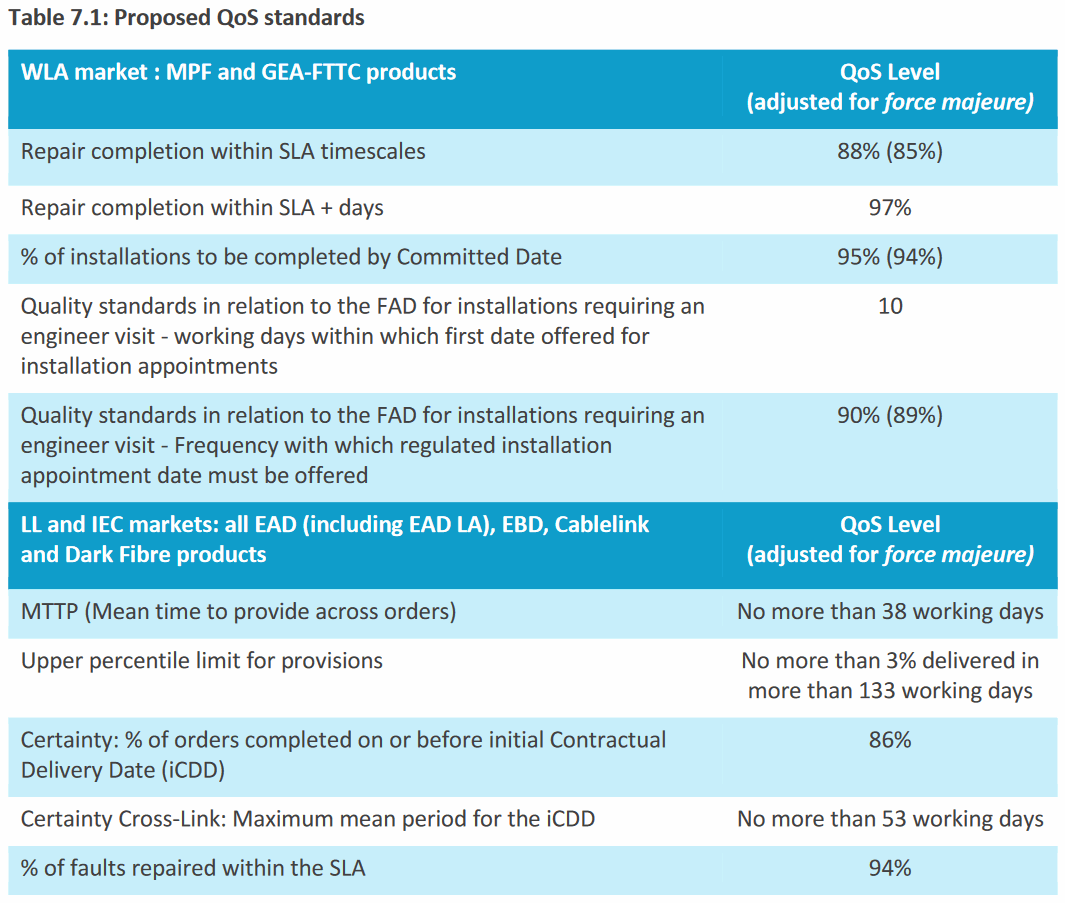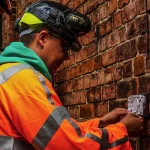Ofcom Start Major Review to Boost UK Full Fibre Broadband Market

The national telecoms regulator, Ofcom, has today launched their first combined Wholesale Fixed Telecoms Market Review 2021-26 (FTMR), which proposes major changes to help boost investment in “full fibre” broadband and high capacity Ethernet (leased line) services for both the residential and business connectivity markets.
Previously Ofcom conducted separate reviews of both the Business Connectivity Market (i.e. leased lines and Dark Fibre etc.) and the more residential focused Wholesale Local Access Market, which tended to occur every 3 years. By comparison the new Fixed Telecoms Market Review (FTMR) combines both of those and covers a much wider 5 year period (from April 2021 to 2026).
All of this is designed to align with the Government’s on-going efforts to boost 5G mobile and “full fibre” network coverage and investment. At present Fibre-to-the-Premises (FTTP) style broadband networks, which can deliver speeds of 1Gbps (Gigabits per second) but in the future may bring Terabit speeds (Tbps) to the masses, covers around 11% of the UK (3 million premises) and that’s roughly double what it was last year (here).
Advertisement
The majority of that (around 2 million premises) has been delivered by Openreach (BT) and they’re aiming to cover 4 million by March 2021 and then possibly 15 million by around 2025. After that the operator has also talked about reaching the rest of the UK, albeit only provided the conditions are right. We also expect Virgin Media to add up to 2 million to this number and possibly more if their Liberty Fibre ambition takes off (here).
On top of that a variety of alternative network (AltNet) ISPs, such as Hyperoptic, Cityfibre, Community Fibre and Gigaclear among others are actively in the process of deploying their own full fibre networks. Both Ofcom and the Government want this to grow, particularly with PM Boris Johnson having committed £5bn to help achieve a target for every home to gain access to a “gigabit-capable” broadband network by the end of 2025 (here).
As such today’s new FTMR includes proposals that have been designed to facilitate all that. The full document is massive and as such we’ve opted to summarise some of the key changes below.
Summary of the Changes
Ofcom’s new strategy is based around a four-point plan to support competitive investment in fibre networks and as part of that they will now vary their regulation for different parts of the country.
Advertisement
Jonathan Oxley, Ofcom’s Interim CEO, said:
“These plans will help fuel a full-fibre future for the whole country. We’re removing the remaining roadblocks to investment and supporting competition, so companies can build the networks that will drive the UK into the digital fast lane.
Full-fibre broadband is much faster and more reliable. It’s vital that people and businesses everywhere – whether in rural areas, smaller towns or cities – can enjoy these benefits. So we’re making sure companies have the right incentives to accelerate full fibre to every part of the UK.”
The 4 Point Plan (Short Summary)
1. Improving the business case for fibre investment.
In more urban areas, where there is likely to be a choice of networks, we will set Openreach’s wholesale prices in a way that encourages competition from new networks, as well as investment by Openreach – by giving it the opportunity to make a fair return.
In these areas, we are proposing that the wholesale price Openreach charges retail providers for its entry-level (40 Mbit/s) superfast broadband service is capped to inflation. This follows a significant cut Ofcom made to this product in our 2018 review, and still provides for a margin on fibre investment, as build costs fall.
Full fibre is consistently faster, and much more reliable, than copper-based broadband. So we are proposing that Openreach can charge a small premium for regulated products if they are delivered over full fibre, to help the business case. Its fastest fibre services would remain free from pricing regulation, to support the investment race between network builders.
2. Protecting customers and driving competition.
We will ensure people can still access affordable broadband by capping Openreach’s wholesale charges on its slower copper broadband services. To prevent Openreach from harming competition, it would be restricted from being able to offer discounts that could stifle investment by its rivals.
3. Taking rural areas into the fast lane.
In more sparsely-populated rural areas, where there is no prospect of multiple networks being built, we plan to support investment by Openreach – the only operator with a large-scale rural network.
We would allow Openreach to recover investment costs across the wholesale prices of a wider range of services, reducing the risk of its investment. If BT provides a firm commitment to build fibre in these parts of the country, we can include these costs in its prices upfront. If not, we would only allow it to recover these costs after it lays new fibre.
Public funding will also be vital in connecting rural areas. The UK Government is planning to invest £5bn to reach the most challenging 20% of the UK and we are working closely with Government on its plans for this.
4. Closing the copper network.
We recognise that Openreach needs to retire its ageing copper wires so it does not have the unnecessary costs of running two parallel networks. We plan to remove regulation on Openreach’s copper products (ADSL, FTTC etc.) in areas where full fibre (FTTP) is built. This will support Openreach in switching customers over to the new fibre network.
We will also protect customers during this transition, by transferring our regulation – including price protections – from copper to new fibre services.
On top of that Ofcom has also proposed a revised series of Quality of Service (QoS) standards for Openreach to help maintain existing improvements in how quickly it must carry out repairs and installations. The regulator also plans to introduce cost-based access to Openreach’s Dark Fibre network in rural areas (i.e. making it easier for 5G networks to get the capacity they need).
Overall the regulator seems to be moving away from cost-based charge controls on copper services (i.e. encouraging ISPs like Sky Broadband and TalkTalk to go fibre) and, for the hardest to reach premises (e.g. rural areas), they will allow Openreach to spread the costs of investment in fibre across a wider group of consumers (e.g. allowing them to recover some investment costs from both copper and fibre products).
The above change is a significant shift and gives Openreach more opportunity to “profitably invest in full fibre at low risk.” On the flip side operator’s like Cityfibre, which are building FTTP in some of the same cities as Openreach (BT), may be pleased to hear Ofcom say that BT’s network access division “would be restricted from being able to offer discounts that could stifle investment by its rival.”
We should remind readers that Ofcom will also require Openreach to introduce unrestricted access for rival ISPs to their existing cable ducts and telegraph poles (Physical Infrastructure Access), which opens their existing infrastructure up to all sorts of business, as well as existing residential, connectivity uses (i.e. making the altnet ISP business models easier).
Advertisement
An Openreach Spokesperson said:
“Today’s proposals appear to be a big step in the right direction to give clarity and investment certainty.
Like the Government and Ofcom, we want to upgrade the UK to faster, more reliable full fibre broadband. We’re getting on with the job, building to 26,000 premises each week and we remain on track to reach 4m homes and businesses by the end of March 2021.”
We’ll consider the range of proposals carefully and will continue to work with Ofcom and industry on getting the conditions right to help achieve the Government’s ambition of rolling out gigabit capable broadband across the UK as soon as possible.”
Unfortunately there’s such a vast amount of new information to read that it will take us awhile to properly cover and Ofcom’s own summaries are frustratingly vague, which means a lot of reading before we can extract the necessary detail. Naturally that’s the problem when you combine several huge reviews into one mega review, which tends to result in the reader being bamboozled by lots of new acronyms for different markets (i.e. painful to read – thanks Ofcom).
Otherwise today’s consultation closes on 1st April 2020, and Ofcom will then publish their final decisions in early 2021 (before the current rules expire in April 2021). The regulator added that, “We are reviewing the Hull [KCOM] area separately and will consult on our regulation of KCOM in the coming months.”
General Summary of Several Key Changes
* Regulation that Varies by Geographic Area
We propose to vary how we regulate Openreach’s broadband products, depending on the level of current or prospective competition in a given area. This approach is consistent with the proposals we set out in March 2019. We propose to vary regulation by geography as follows.
In competitive areas, where there is established competition (i.e. at least 2 existing networks + BT/OR), we would not regulate Openreach’s broadband products. We propose not to identify any such areas at this stage but expect to do so in the future. Customers in these areas would benefit from the choice of multiple networks, so we could remove regulatory restrictions, which will encourage investment and innovation.
In potentially competitive areas, Openreach will continue to be required to provide wholesale access to its network. We would maintain flat, inflation-adjusted, regulated prices for Openreach’s entry-level superfast broadband service, which has a download speed of up to 40 Mbit/s. This provides stability and certainty to investors and allows all companies the potential to earn a fair return. It follows a significant cut Ofcom made to the price of this product in our 2018 review. To help the fibre investment case, Openreach would be able to charge slightly more for these regulated products if they are delivered over full fibre. This reflects the additional customer benefits, such as speed and reliability, that fibre offers over copper.
We would not regulate the prices of Openreach’s higher-speed packages. To provide protection for new entrants, we plan to prohibit Openreach from offering geographically-targeted discounts, including on their fibre services. We would also require Openreach to give 90 days’ notice for the introduction of certain commercial terms which might create a barrier to using alternative network operators. This would allow us to assess their impact and acceptability before they take effect. Prior to our new proposals taking effect, we will monitor any commercial arrangements proposed by Openreach and would expect to use our existing powers to intervene to prohibit any arrangements which we consider would deter alternative network rollout.
NOTE: A potentially competitive area means where 1 or more existing alternative ultrafast networks are already present, as well as areas where 1 or more operators have a plan to deploy and Ofcom considers the future rollout could be economic.
In non-competitive areas, where Openreach is the operator providing a large-scale network (i.e. no rivals or plans by rivals), we are proposing regulation designed to support investment by allowing Openreach to recover its costs to build a new fibre network. It would recover these costs across a wider range of services (similar to a “regulated asset base” model approach) which would reduce the risk of its investment. If Openreach provides a firm commitment to lay fibre in these parts of the country, we can include the cost of this deployment in its prices from the outset. If not, its prices would only increase after fibre has been built. We will also require Openreach to provide dark fibre links to support mobile and other network growth.
* Dark Fibre Access
Ofcom tried and failed to introduce a full DFA product in 2016/17 (here), which would have given rival ISPs physical access to install their own equipment at either end of the fibre within Openreach’s cable ducts but was blocked by the courts due to the regulator’s incorrect market definitions (they essentially proposed DFA in some areas where Dark Fibre rivals already existed and that was a bad idea).
Instead the regulator only succeeded in getting the operator to introduce a Dark Fibre X product (here), which merely catered for the inter-exchange connectivity market (i.e. the connections between BT exchanges in different geographic areas – like between towns and cities).
However the regulator has, as above, revised how they define different markets and have thus proposed to give DFA another go. So as well as the existing Dark Fibre X product (this has also been re-imposed by today’s review) they will also introduce a requirement on Openreach to provide access to Dark Fibre Access for the supply of leased line access (LL Access) in Area 3 (i.e. non-competitive areas).
* Regulating ‘leased lines’ in a similar way to residential broadband.
We propose to regulate Openreach’s ‘leased lines’ – high-speed data connections used by large organisations, which form the backbone of the UK’s mobile and broadband networks – in a similar way to residential broadband products, by varying our approach geographically to reflect the level of current or prospective competition.
* Proposed Quality of Service Standards for Openreach
One other small but interesting thing to note concerns Openreach’s 40Mbps (10Mbps upload) FTTC and FTTP tiers. Ofcom has already forced a regulated pricing model on this tier (i.e. making it cheaper to encourage take-up of fibre-based broadband services). However today’s review confirms that the FTTP side of this tier will attract a small premium to reflect its superiority over hybrid fibre FTTC: “We think an average differential of £1.10 is reasonable to allow for the higher speeds that 40/10 FTTP would deliver as compared to 40/10 FTTC products” (we believe this is per line per month).
Separately Openreach has already announced that they will offer a low speed 0.5Mbps FTTP tier specifically to support voice-only customers (here).
UPDATE 9:32am
The first comments are coming in.
Ed Dodman, Ombudsman Services Director of Regulatory Affairs, said:
“Full-fibre is the future of fixed broadband. It’s good to see Ofcom using its powers as a regulator to stimulate competition, drive investment and improve outcomes for consumers.
Many of the broadband complaints we handle from consumers and small businesses are to do with issues around speed and reliability, so we support proposals that will lead to improvements in these areas across the UK.”
Tristia Harrison, CEO of TalkTalk, said:
“We fully support the goal of accelerating full fibre roll-out in Britain. We are clear, however, that a competitive market is the only way to deliver this goal.
It’s essential the regulatory environment allows competition and investment to thrive. Ofcom must avoid raising wholesale prices too early and only do so when competition has been established. This is the best way to encourage investment from new entrants, support retail competition and protect consumers from higher charges before they have access to faster, more reliable services.”
A Virgin Media Spokesperson said:
“We are rolling out gigabit connectivity across the UK and passionately believe that building next-generation broadband needs to be supported by regulators and Government. These measures are an important step forward in providing the long-term certainty and clarity network investment requires.”
UPDATE 11:44am
Some more comments..
Evan Wienburg, Truespeed CEO, said:
“We all agree that rural Britain deserves full fibre broadband. It’s well understood there are a growing number of privately funded infrastructure providers already investing in these network builds and customers are benefiting from brilliant products and services. Ofcom must take account of the work that providers such as Truespeed and others are doing in rural areas and not muddy the playing field by allowing Openreach to waste money on overbuilding projects in these areas.
We urge Ofcom to ensure a fair and level playing field between private and part public-funded infrastructure providers as the industry ramps up to deliver on the promise of full fibre broadband for all, regardless of post code.”
A Hyperoptic spokesperson said:
“Hyperoptic is the UK’s largest residential gigabit broadband provider and our network is set to quadruple in the next three years. We welcome any proposals that improve the UK’s broadband infrastructure. Ofcom and industry recognise the consumer benefit of full fibre products, which deliver superior reliability and speed. We offer our customers market leading great value flexible contracts and are confident we will continue to compete strongly with other providers of full fibre.”
UPDATE 12:47pm
Yet more comments..
Stephen Lerner, General Counsel and Regulatory Director at Three UK, said:
“We welcome Ofcom’s proposals which should incentivise the deployment and expansion of competing full fibre networks throughout the UK. This will be instrumental in both enabling the widespread rollout of true 5G networks capable of offering gigabit speeds and providing consumers with a choice of providers which offer the residential broadband services that they demand.”
Greg Mesch, CEO at Cityfibre, said:
“We believe the direction of travel Ofcom is taking to ensure national coverage and to help establish the at-scale competitors essential to maintaining a healthy infrastructure market for the long term is right, but we would like to see it move further and faster.
While we are encouraged by Ofcom’s recognition of the risks of volume discounts and geographic pricing to damage competition before it can scale, but we would like it to be even more proactive in addressing these issues. The Government’s 2025 target for national coverage is ambitious and while possible, it is only achievable with bold and affirmative action.
We look forward to working with the new CEO of Ofcom and the freshly formed Government to present our ideas for a more comprehensive framework that will help more of the UK access full fibre connectivity faster.”
UPDATE 4:54pm
Final comments of the day.
Nicky Morgan, UK Digital Secretary, said:
“Getting fast, secure and resilient broadband across the UK as soon as possible is a priority for this government, so I welcome Ofcom’s proposals to help boost the UK’s fibre network.
We will legislate to speed up the roll out of gigabit-capable broadband and invest £5bn to boost connections in the hardest to reach parts of the country.”
Graeme Oxby, CEO of Community Fibre, said:
“It’s good to see that Ofcom recognises that full-fibre is the best way forward for future-proofing UK broadband infrastructure and that it offers a faster and more reliable service to consumers and businesses, compared to the old copper and cable networks.
Much is made of the need to support roll-out in rural areas, but as leaders in the roll-out of urban networks, Community Fibre is clear that investment support will be required to achieve 100% coverage. In particular to give customers a choice of provider, even in urban areas.”
Mark is a professional technology writer, IT consultant and computer engineer from Dorset (England), he also founded ISPreview in 1999 and enjoys analysing the latest telecoms and broadband developments. Find me on X (Twitter), Mastodon, Facebook, BlueSky, Threads.net and Linkedin.
« ISP KCOM Invest £100m to Expand UK FTTP Broadband Network
Electrosensitivity UK Ad Banned for Claiming 5G is Dangerous »























































(sighs) So hot air from Ofcom as usual about supporting Fib then the usual but we’ll cap copper prices (harming the biz case for transition) and we’ll slap on caps for fib (low speeds) when ppl do swap. The latter may be right in the medium term but initially it just harms the incentives
Yeah however once fibre is laid in the area the caps on copper is lifted allowing BT to charge as much as it wants in the area thus enabling them to force vendors onto the FTTP/H network.
@Danny
I don’t see anything wrong with hiking copper prices when OR can say ‘I’ll connect you to FTTP for the old money you were paying”
At some point a bit of coercion is needed and OR, as OFCOM recognize, need to switch off the redundant network and that does mean getting the refuseniks to move over to full fiber.
Provided the price control is only on the social level connection 40/10 etc I don’t have a problem with that.
The alt nets (competition) will sort out the pricing for the other tiers.
Laying new fib is driven by take up. The faster we get those who can onto Fib the more and (within capacity) faster rollouts will move. Everything we can do to make taking F better option helps.
As A_B says we need some coercion here.UK is a long way behind on Fttp and we’re going to stay that way if everything drags along at the pace of the slowest with the intent to upset no one.
Like all regulators the instinct is always to regulate then think of reasons for exceptions not to rather than the reverse.
Not sure you realise just how much cheaper an FTTP network is to operate than a copper one, Joe.
Once the whole network is full fibre over 80% of exchanges go. All that old metallic plant doesn’t need maintenance, the kit it’s connected to powering, space and cooling.
May I suggest a read of https://www.lightreading.com/ethernet-ip/new-ip/verizon-saves-60–swapping-copper-for-fiber/d/d-id/715826
Being rid of the copper is its own incentive. Having to provide a 500 kbps voice-only service at a regulated price and having to charge the same for fibre as copper for a year on FTTC-speed products really isn’t a big deal.
Eh? What are you on about. I’m perfectly aware of the costs CvF can’t see why you could possibly think overwise. I’m arguing for maximal changes to drive the change faster to realise those costs and drive the rollout
But in a heavily regulated environment which we still have the consumer doesn’t see the reality of that in many cases. And they need to want to switch to make much of this all happen. The network being there is not enough
Seems good. One point implies different wholesale pricing in rural and urban areas which seems a good incentive to Openreach.
Some carrot that doesn’t involve cross-subsidy from urban areas, raising Openreach prices there, or via taxation is welcome.
Always going to be a need for some funds to move around the country due to our gross imbalances but this is a case where it can be avoided to an extent.
That said I am sure those in those areas won’t be delighted and who could blame them?
The thorny bit is defining rural.
As you said the other day a hamlet may be rural but may have a high density and have FTTC backhaul that can be repurposed.
So there might be no reason for it to have a different cost treatment.
Someone will likely point you to the ons site and the definition of rural, your point is valid in so far as the rural hamlet/village may be fairly dense, but the exchange area as a whole isn’t going to be.
Carl. Why are you so opposed to cross subsidy from urban areas. Many businesses do similar, so does our tax system.
@Gary
I could have expressed that better.
I’m aware of the ONS definition of rural.
What I was expressing badly was, as you picked up, that there are some bit which perhaps contain quite a few premises that are IRL little different, in network terms, to some urban areas.
Whist I’m all in favour of getting this done it is important the demands on OR to sharpen its pencil rather than BT defaulting to begging_bowl#6 are maintained.
A_Builder:
I can immediately think of villages/ham where a central FTTC cab exists and the houses are all within 100m or so and either in ducts or all overhead via poles. With Fttp adjacent already to the area a conversion over would be cheap and reasonably easy.
I live in a city, Gary. While I accept the necessity, and said so, doesn’t mean I have to either like it or welcome it.
It is what it is.
It would have been very easy to use nothing but subsidy, at the expense of forcing Openreach to charge more in urban areas and harm the competitiveness of their customers.
A more balanced approach is welcomed.
@CarlT, as you apparently dislike cross subsidies, what is your view of the overall public spending disparities between the UK regions? e.g. per capita spending in the south west is more than 15% lower than in London.
Already answered with: ‘Always going to be a need for some funds to move around the country due to our gross imbalances but this is a case where it can be avoided to an extent.’
Let’s talk some history over the last 10 years.
Worth pointing out Ofcom’s previous stated weasel preference of being “technology agnostic” in order to wash their hands of any obligation regarding the deployment of full Fibre v BT’s ‘upto’ Copper carcass, while promoting ‘can of worms’ pointless G.fast, as a solution when Ofcom knew full well it’s limitations aka. it being a snake oil product.
If history tells us anything, Ofcom are anything BUT forward thinking, pro active isn’t in their vocabulary. An organisation spouting weasel words mostly to support the incumbent.
The capping of the £19.99 BT line rental to £11.99, a Jonathan Oxley policy decision is a case in point, turned out to be a superficial waste of space, given anyone with Broadband didn’t qualify for the reduction to £11.99 line rental, another pointless Ofcom proposal, and even then (if you were that solitary person, it amounted to just a 2 year period, before it relents.
Ofcom’s policies are half the reason we’re in this mess, that and the elephant in the room – the lack of fibre in the ground to support this miraculous blanket 5G, were all supposed to be getting. BT’s ‘sit on hands’, wait for handouts approach, why? because they can.
Competition and Mergers authority granting the BT/EE merger is the other half of this mess. Based on the incredulous statement that BT and EE didn’t operate in the same markets. BT seem to have their fingers in a lot of regulatory pies, so to speak.
It’s not just Openreach that should be separated, BT/EE should be split. Ofcom has been all but useless in the consumer market. The clunky ‘bag of nails’ underlying Openreach systems for migrating providers don’t work and many can end up with line cessations, when trying to leave due to mid-term price rises, complicated Ofcom rules that just don’t translate into how the migration process operates and how underlying BT systems are tied up, which prevent the consumer ordering, thus switching until it’s too late.
There is so much is wrong with Ofcom, yet Sharon White gets a New Year Honour. The powers that be are so out of touch.
I wonder who you voted for Adam……try offering a solution that isn’t going to make the roll out of fibre impossible.
BT and EE should be split because some OR processes don’t work very well? That’s interesting logic.
Your elephant in the room is nothing of the sort because 5G doesn’t user consumer broadband for backhaul and never will. Fibre is available to almost every single location in the UK, via OR’s EAD and similar products.
Hmme
I’d like to understand the cost of using EAD to every other lamppost throughout the UK – that is what it takes for a full 5G deployment. Try looking at some of the test deployments. Yes ATM they have huge equipment racks all over the place but the next generation or two will be cloudily managed with very little local kit.
BT were publicly talking about 5G being nano/femtocell on customers routers at one point as a means of bulk deployment. It is just data – and it CAN be deployed over FTTP or be overlayered.
TBH I don’t see any realistic alternative to doing this cost effectively.
VM installing near here. Duct to each property, but not the lampposts.
@The Facts
I’ve no idea if the VM network could support 5G deployment?
ATM I guess not because 5G needs a higher bandwidth upstream.
But that might change if VM upgrade the upstream in FTTP areas.